Pacific County
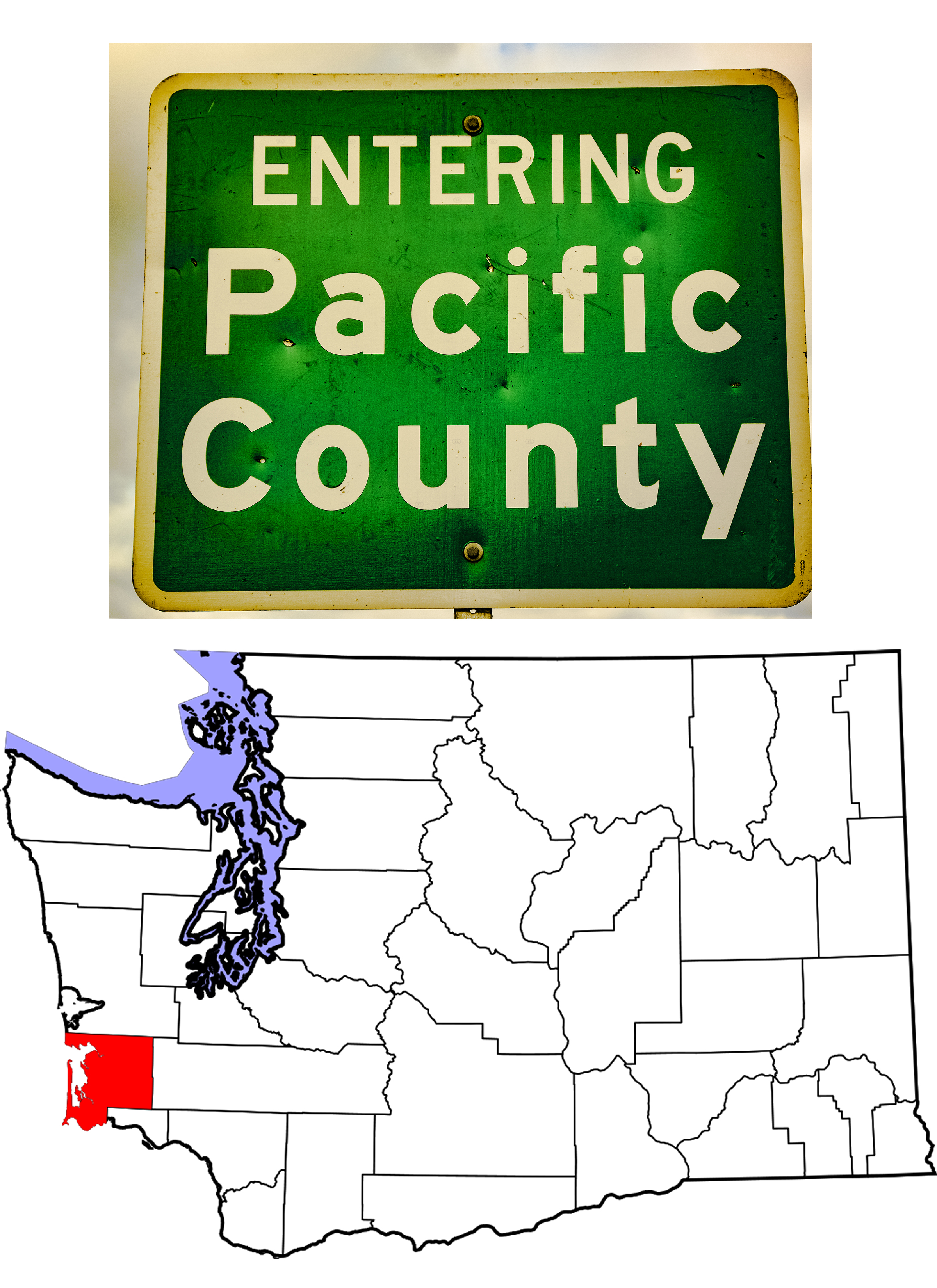
In 1851, the Oregon Territorial Legislature created its first new county north of the Columbia River when it took the southwestern corner of Lewis County to form Pacific County, named, of course, for the Pacific Ocean that marks its western boundary. Over the next twenty-five years, the county grew and shrank, reaching its current lines by 1875. Chinookville, founded in 1850 at the site of a Chinook Indian village on the north bank of the Columbia, became the first County Seat. Two adventurers, Robert H. Espy and L.A. Clark, took Chief Nahcati’s invitation to come north on the east side of the Long Beach peninsula where they found, not acres of clams, as the old settler’s song says, but acres of oysters. The two men settled in, shipping oysters off to San Francisco, and the town of Oysterville grew up around them. In 1855, the County Seat moved to Oysterville, and remained there for almost forty years, but in 1893 there was a fight between Oysterville and South Bend, a town across the bay on the banks of the Willapa River, and after a nighttime raid in which South Bend partisans stole the county documents, the County Seat moved to South Bend where it remains today.
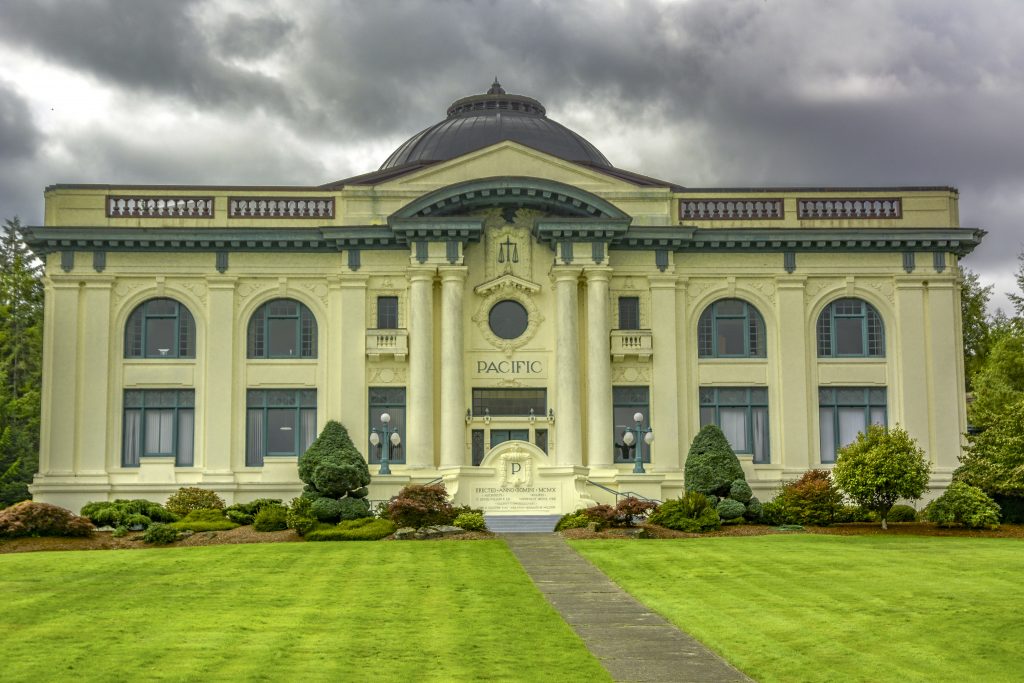
Like most of the U.S., there were people living in the area before white settlers moved in. The Chinook people had some forty villages in what is now Pacific County, both along the Columbia and on both sides of Willapa Bay. The Lower Chehalis also lived in the region, but both the Chinook and the Chehalis were hard hit by introduced diseases for which they had no immunity. In 1866, President Andrew Johnson established the Shoalwater Indian Reservation on the north shore of Willapa Bay at the site of a Chinook village. At roughly one-half a square mile, the Reservation is the only one in Pacific County and the “Shoalwater Bay Tribe” has 237 enrolled members—people whose ancestry includes Chinook, Chehalis, and other tribes. The tribal center is at Tokeland, a “Census Designated Place” at the northwest corner of Willapa Bay. The non-treaty Chinook have tribal offices directly across Willapa Bay in Bay Center.. Historically, the native people of Pacific County lived pretty much the same way that many Pacific County residents do today: commerce based on the harvesting and marketing of oysters, other local fish and cranberries.
Geographically speaking, two things set Pacific County apart: the Long Beach Peninsula; and Willapa Bay. The peninsula marks the western border of the county, extending almost thirty miles north from the mouth of the Columbia. The city of Long Beach advertises “the World’s Longest Beach,” although that claim is subject to debate. The peninsula is barely one mile wide, but is home to many communities from Seaview in the south to Oysterville in the north. Willapa Bay is notable not just for its oysters, but also because water makes up almost one quarter of the total area of Pacific County, and most of that water can be found in Willapa Bay (formerly known as Shoalwater Bay) which is wholly within the borders of Pacific County. In December, 1851, the oyster schooner Robert Bruce burned to the waterline on the eastern side of Willapa Bay. The rescued sailors built an encampment on the site which became the town of Bruceport. Today little remains but a faded and damaged historical marker.
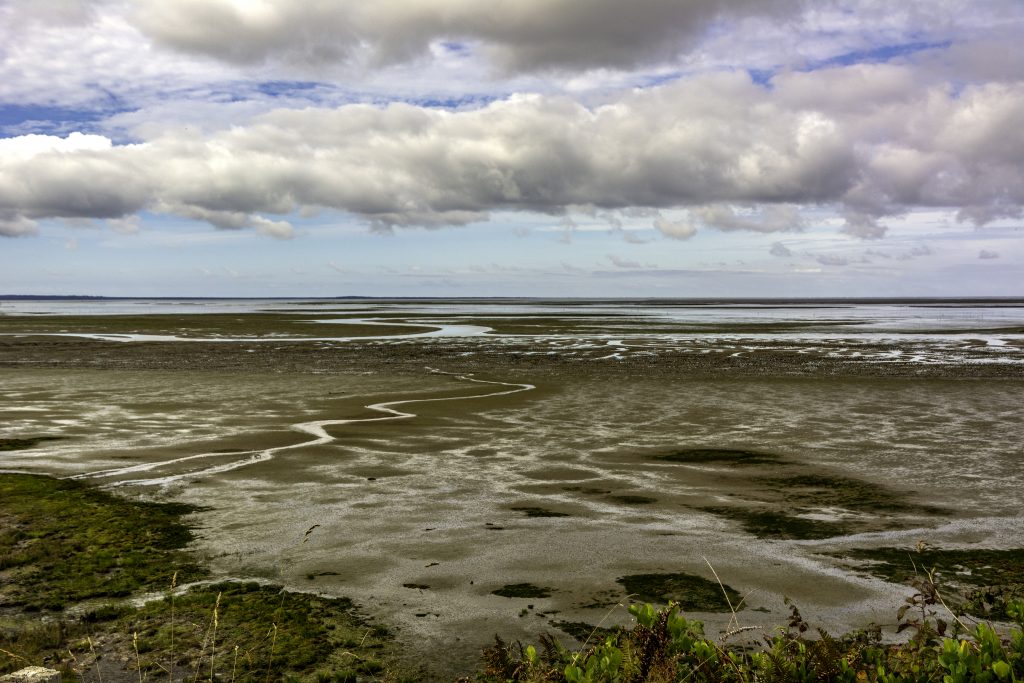
Once you get east of Willapa Bay, you find yourself in the rolling hills of the coastal range, an area heavily timbered in the early days of white settlement: 90% of eastern Pacific County was covered with timber, a resource that would become as important a crop as oysters. In fact, timber created a boom or bust economy as mills opened, closed, reopened under new ownership, all while the heavily forested hills were being cleared. Two of Pacific County’s four cities were founded around lumber mills.
Unfortunately, the climate in Pacific County is not conducive to much agriculture, and the average size of Pacific County farms is 152 acres, according to city-data.com. One of the most important crops attempted in the County is cranberries. Wild cranberries grew in the region before the arrival of white settlers, and the native people harvested and traded them. By 1847, the area was shipping cranberries to San Francisco. Commercial production began in the 1880s, but just as had happened with the native people, introduced diseases killed off the plants. In 1923, the State College of Washington (now known as Washington State University) built an experiment station near Long Beach specializing in cranberries and blueberries. The 1930s saw growers joining Ocean Spray, a co-op, and today Washington’s cranberries come almost exclusively from Pacific County.
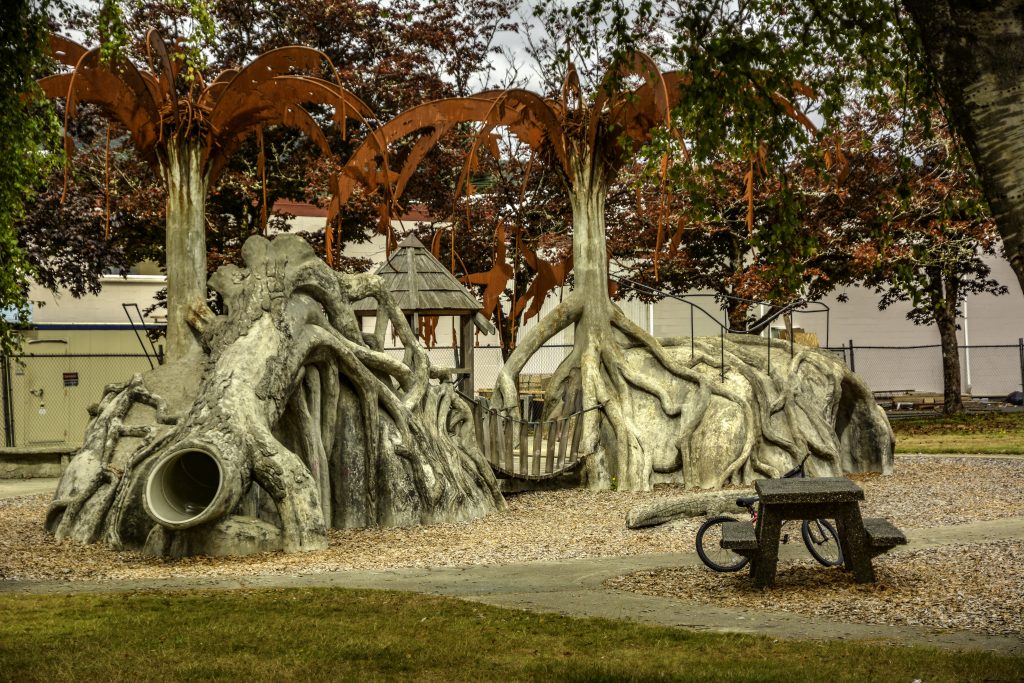
One of the towns to grow up around a lumber mill is South Bend, so named because of its location along a bend in the Willapa River just upstream from the river’s mouth into Willapa Bay. Founded in 1869, the town relied on timber industries until the Northern Pacific Railroad promised to build a rail terminus in the community. This led to land fever, and the town incorporated on September 9th, 1890. In 1893, the town became County Seat, after a contentious fight with Oysterville on the Long Beach peninsula. Within twenty years the town had grown to 3,023 people according to the 1910 U.S. Census. That apparently was the high point for the town. No subsequent Census has shown more than 2,000 residents, and the 2010 US Census counted only 1,637 people living in South Bend. Fishing is what brought men (and later their families) to Pacific County. Logging and the timber industry built South Bend, but both fishing and logging are subject to whims of nature, the overall economy, and over harvesting of the raw materials. In the aftermath of the 1929 stock market crash, South Bend’s mills closed down. They remained closed for four years and re-opened only after Weyerhaeuser Timber bought up the existing privately-owned mills. With the mills closed, the people turned back to fishing and harvesting oysters, but that, too, proved unreliable. According to city-data.com, in 2016, only 9% of Pacific County residents were involved in “farming, fishing and forestry occupations. Today, the big push is on tourism and recreation. While driving along US 101 through South Bend, I noticed many kayaks out on the river, a suitable way to pass Labor Day Weekend, in my book. And no trip to South Bend would be complete without a stop at Robert Bush Park, named for a local Medal of Honor recipient and home to the World’s Largest Oyster. I’m sorry I missed it.
Four miles east on US 101 (can I say east when 101 is a north-south highway?) is the town of Raymond, the largest community in Pacific County. L.V. and Stella Raymond inherited a Homestead from Stella’s father, and added land to it for a total of 310 acres which became the nucleus of the Raymond Land and Development Company in 1903. The town of Raymond was platted, lots were sold, and boardwalks were put in place to allow the townsfolk to cross the swampy land on which the town was built. Voters approved incorporation of Raymond on August 6th, 1907. The 1910 US Census counted 2,450 city residents, a number that grew to 4,260 by the 1920 Census. Like its neighbor, that was the highest population count Raymond has seen. The 2010 Census found only 2,882 folk living in town, and the 2016 estimate shows a drop of .4% from that number. Raymond is proud of its timber-based beginnings. The city’s library (on the National Register of Historic Places) is called the Raymond Timberland Library, and across the street, in Fifth Street Park, is a wooden statue called The Logger, a cedar log donated by the Weyerhaeuser Company and carved by John Dempsey. The children’s playground in the park has a “jungle gym” that resembles twisted tree roots, and the slides look like hollowed out logs. Around town you’ll find various flat metal statues depicting the pioneers of the area.

It is less than thirty miles from Raymond to Long Beach, perhaps the most tourist-oriented city in Pacific County. Less than thirty miles, that is, if you don’t mind flying with an old crow. By US Highway 101, the distance is 47 miles, and you can expect to spend an hour on the road getting from one city to the next. Unless you are there in the summer. The 2010 US Census found 1,392 people living in Long Beach, but that number can triple with beach goers, kite flyers, and sport fishermen, all of whom tend to show up when the weather is warmest, go figure. From the start, Long Beach has been a tourist destination. In the 1800s, before roads were built west from Portland to the Oregon Coast, rich folk from Portland would get on a steamship, head down the Columbia to Astoria, then take a ferry across to the white sand beaches of the peninsula. Jennifer Ott, writing the HistoryLink post on Long Beach suggests that some 5,000 visitors a year were traveling to the area by the mid 1880s. Note that there were no roads connecting the southwestern coastal area to the Washington interior, so the “tourists” were mostly from Oregon. As the Oregon Coast resorts became available, the people of the Long Beach peninsula found new ways of attracting guests. Indoor swimming pools called Natatoriums opened, and the long, white sand beach provided a venue for auto racing. In the 1930s and 40s, motorcycle races were all the rage, but the locals grew wary of the motorcycle crowds, and ended the motorcycle rallies in 1964. But have no fear, if you’re in the mood for fun and frolic, Long Beach hosts the Washington State International Kite Festival every August, and the town is home to the World Kite Museum. And if that’s not enough (I love kite festivals, personally), the Chautauqua Lodge has an events page on their website that lists thirteen festivals and other area events in just March, April and May, although I’m not really sure I care to know what the Cornhole Tournament is, even though it’s happening as I write this on March 1st, 2019.
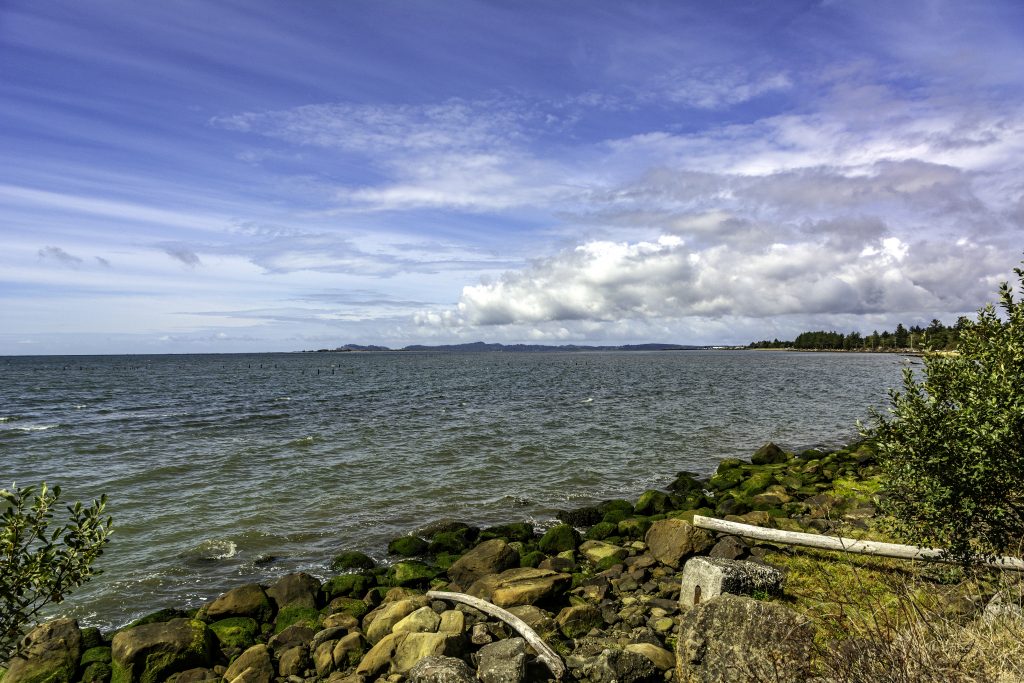
The Columbia Rolls On to the Sea, Chinook, Washington
![]()
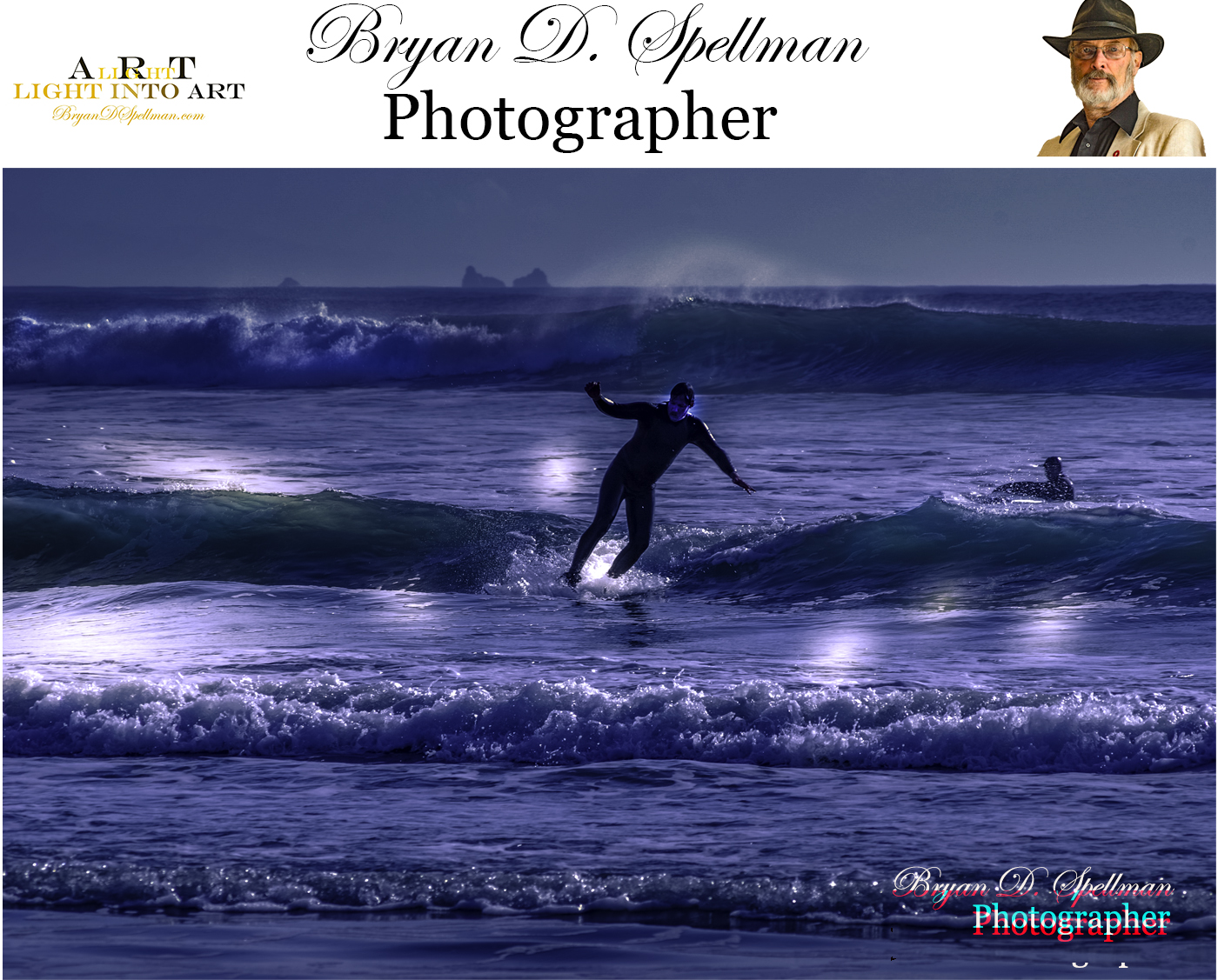
Hello there, I found your site via Google while looking for a similar subject, your website came up, it seems great.
I have bookmarked it in my google bookmarks.
Hello there, simply was alert to your blog via Google, and located that it is really informative.
I am going to be careful for brussels. I’ll be grateful if you happen to continue this in future.
Lots of other folks will be benefited from your writing. Cheers!
Thank you for your very kind comments. I appreciate all feedback and hope you return to see more of my writing. Bryan
That is very attention-grabbing, You’re an overly professional blogger.
I’ve joined your rss feed and stay up for searching for more of your excellent post.
Additionally, I’ve shared your web site in my social networks
Like!! Really appreciate you sharing this blog post.Really thank you! Keep writing.